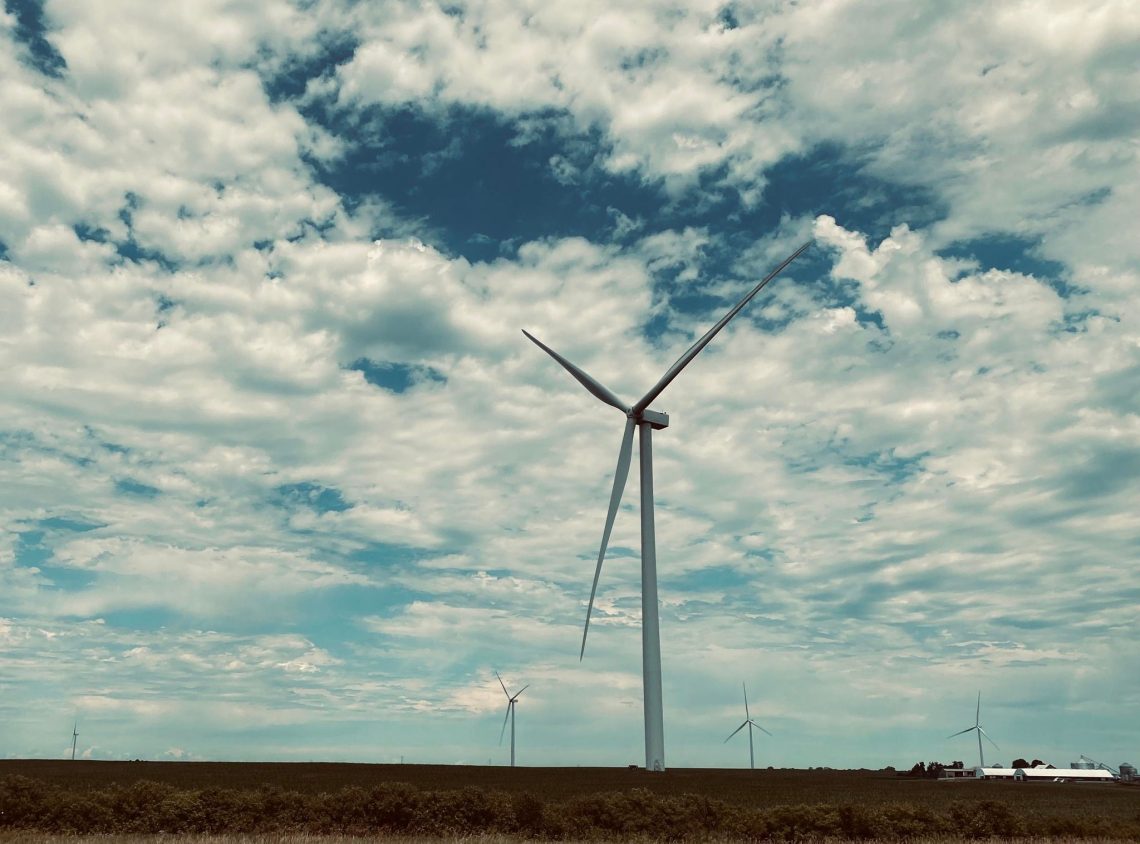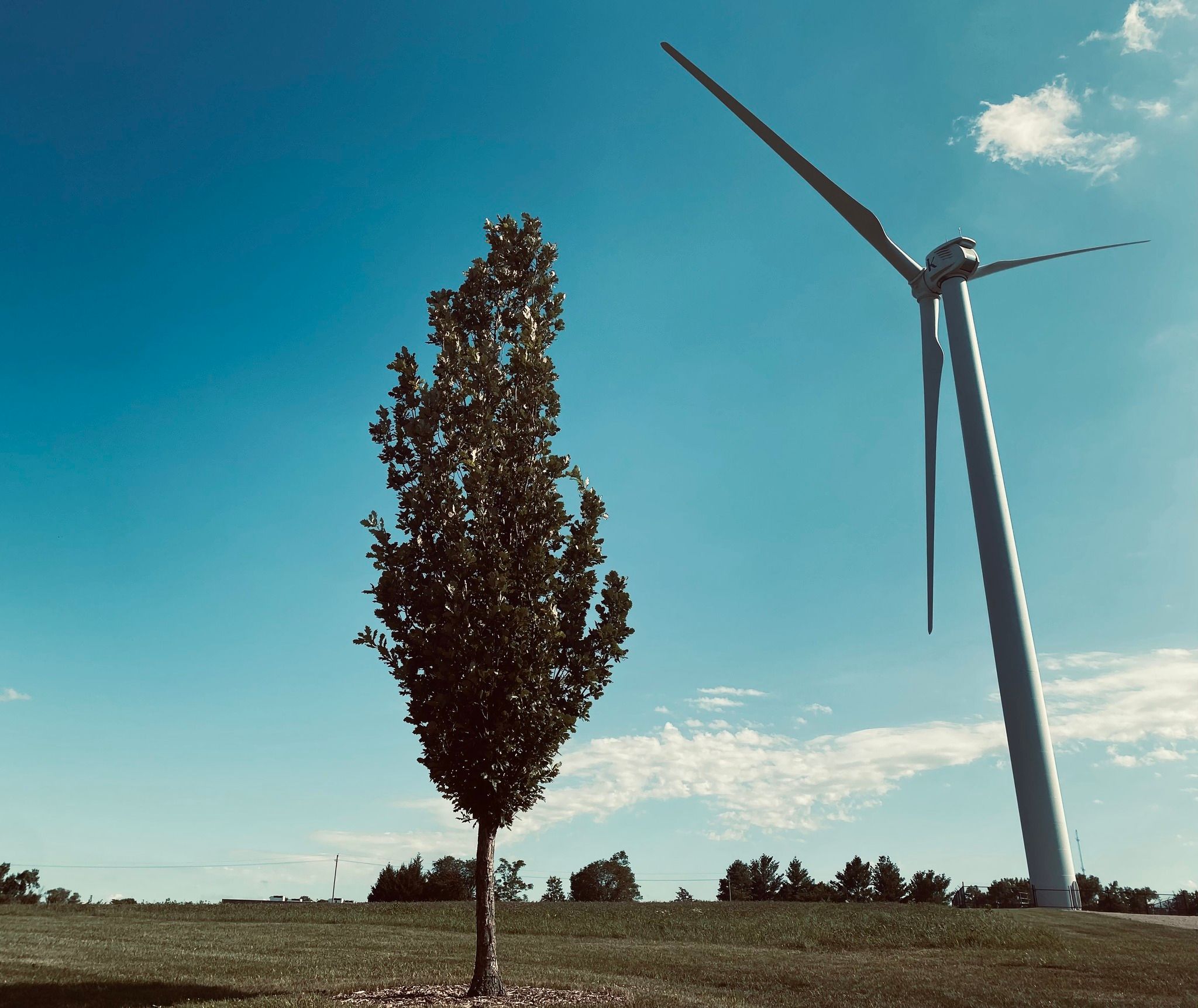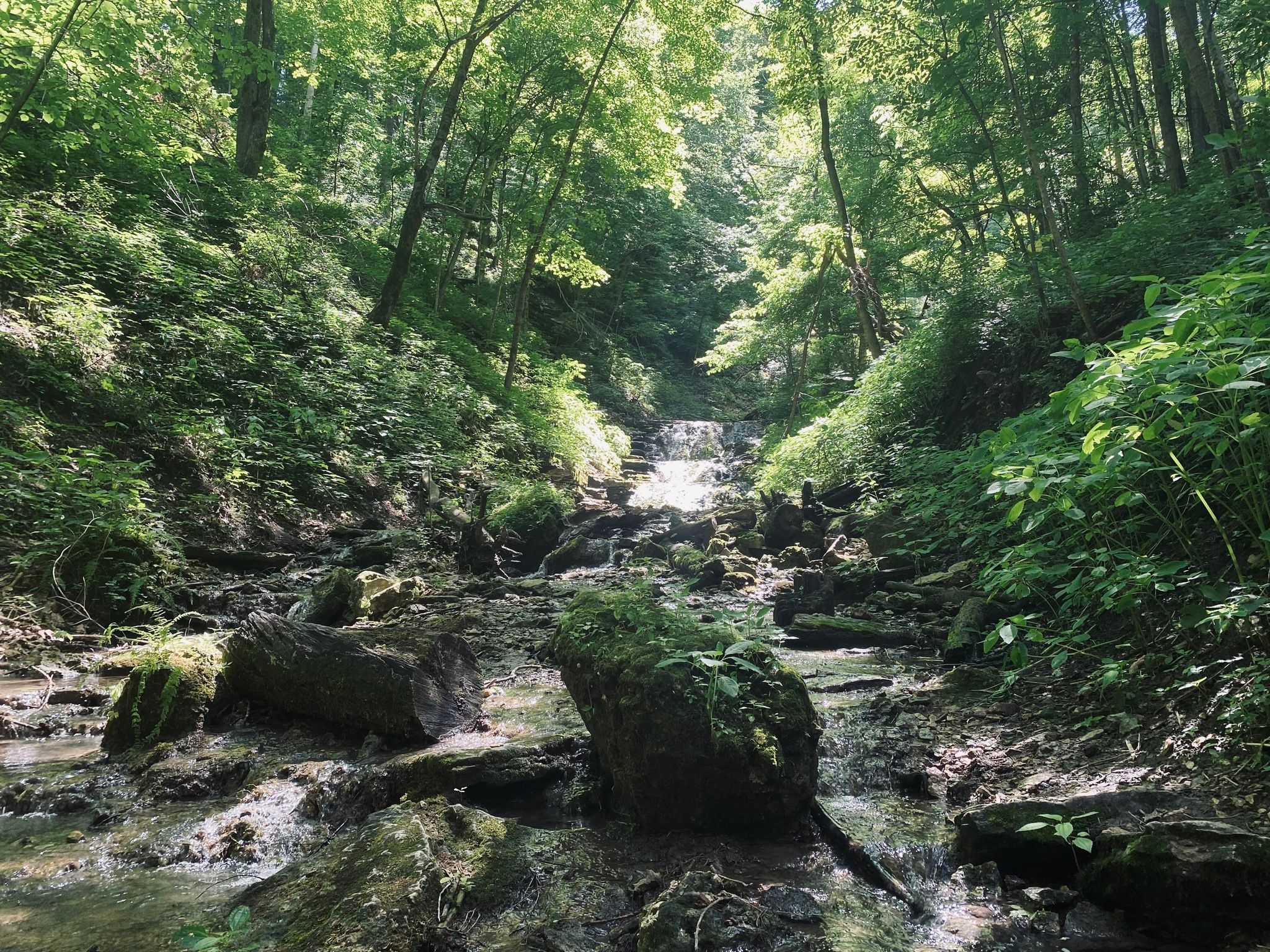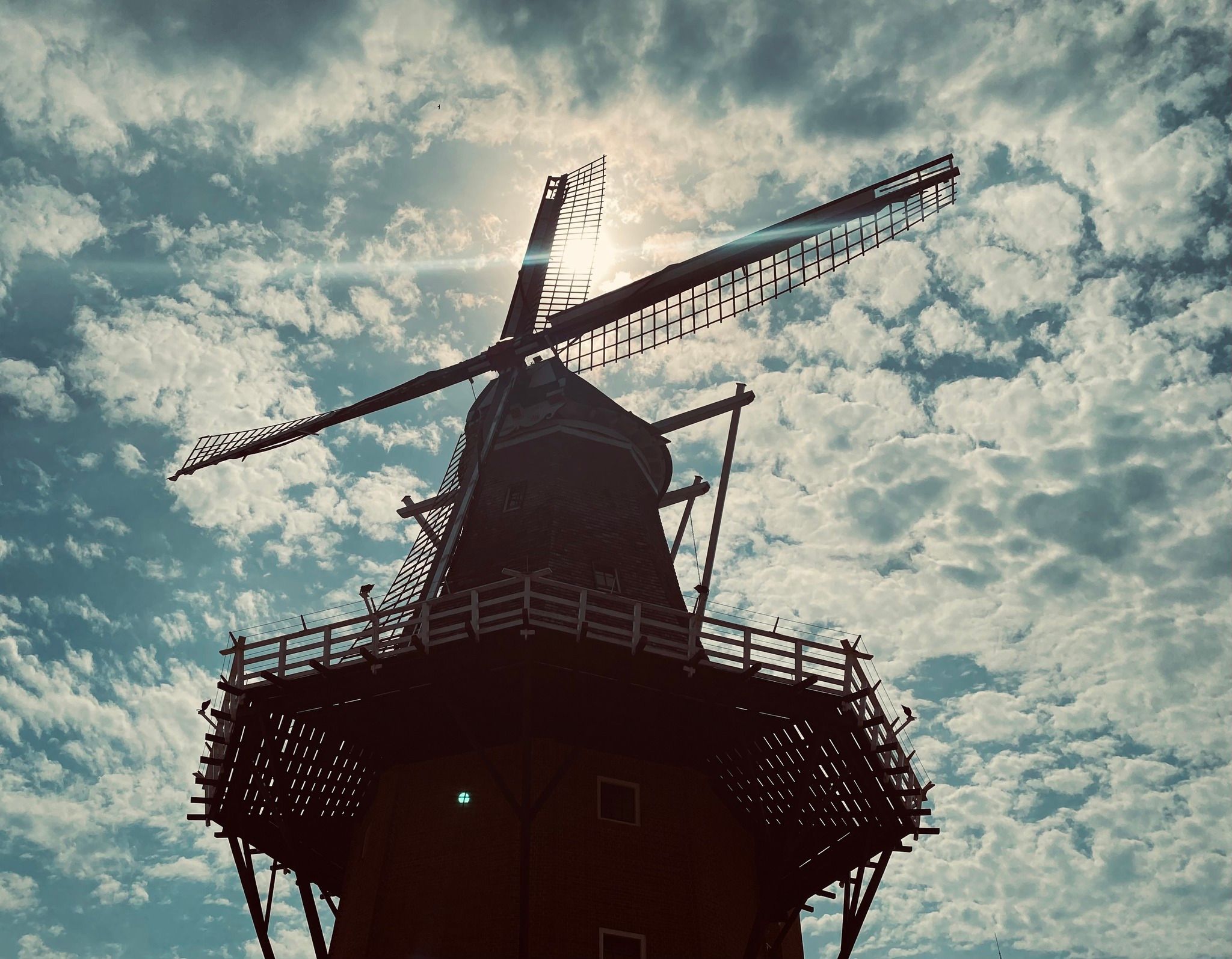
The Humble Architects of an Unseen Power
Pulling out of the airport in Cedar Rapids, out into the back roads and side roads and major roads of Iowa, the first word that comes to mind isn’t what you might think. It’s not cows. Or corn. It’s not flat. Or boring. On the contrary, the first thing I noticed, the first thing I felt, the first thing that shocked me, was the astoundingly high number of wind turbines, each of them spinning on my left and right for miles and miles. Not just a couple, here and there, but everywhere. Enough that I found myself compelled to ask some important questions.
One of the things we cover in elementary science is the concept of renewable and nonrenewable energy. It’s not the most compelling of topics, for sure, but it comes up in class because we’re teaching our kids about the earth, how it’s used and how it can be better cared for in the future. It’s not a political conversation, but a practical one, a matter of basic comprehension, a discussion about which sources of energy can be reused and which sources of energy simply burn off and up, into the atmosphere. Renewable sources being, of course, water, wind, and sun. Nonrenewable sources being, of course, anything pulled up from under the earth and heated, like oil, coal, and natural gas. Yes, there are manufactured sources, like biomass and nuclear, but those come with a particular risk, since they’re not, um, natural.
Anyhow.
According to the latest information from the U.S. Department of Energy, 55% of Iowans get their energy from wind power. The closest state behind them is South Dakota at 52%, with Kansas, Oklahoma, and North Dakota pulling wind power in the 30-40% range. Most other states are under 10% wind power. It’s worth noting that Washington, Oregon, and Idaho, the trifecta of the Pacific Northwest, are drawing in 64%, 46%, and 51% of their energy from water, respectively. South Dakota may actually be the most energy dependent state in America, when you combine their wind energy at 52% and their hydroelectrical energy at 30%. But for the sake of saying it, none of these numbers happened by accident. Becoming an energy independent state requires a great deal of planning by men and women who may not be around to see the fruits of their labor, years and decades later.
For those who don’t often see these big white towers in a field every day, I have to address the sheer and audacious size of a single wind turbine. Along westbound Interstate 80, between Iowa City and Des Moines, I passed a semi truck carrying a single, broken blade that dangled higher and longer than the truck itself. In other words, when you look at these images, they’re not the same as a factory windmill or a simple fan. You really have to imagine a rotor pulling and spinning three tractor trailers around a single axis. They’re THAT big. Some have argued against them because, as you might imagine, they impede the landscape and, more troubling, they create an aching pollution of noise that leads to headaches and migraines. They’re even known for bringing down eagles and other wildlife in the areas where they’ve been placed. So the decision to use them isn’t a cut-and-dry, black-or-white issue, but one that requires more serious, cooperative intent.
All that to be said, there’s a measurable difference in how states gain and use energy, how states manage their own business with effective, innovative, forward-thinking ideas versus how states mismanage their own business with sometimes dangerous, misinformed, and backward-thinking impediments to growth. Plenty could be said, for example, about President Biden’s home state of Delaware, for which 95% of their energy still comes from natural gas and coal (that’s not progress, that’s not progressive). Or, by the same token, plenty could be said about Florida, the so-called sunshine state where the sun accounts for less than 4% of our energy, well behind our use of natural gas, nuclear, and coal (we’re not even in the top five states of solar production, nor does it look like we’re trying). In other words, right now, every state does things differently, either creating a sense of dependence or a sense of independence. And for what it’s worth, I’ll grant that the wind in South Dakota isn’t like the wind in North Carolina, or that the sun in Vermont isn’t like the sun in Mississippi, but the sharp divide in how we all manage our energy is worth noting, particularly of late, as the Supreme Court recently told the EPA that it is no longer allowed to flex its muscle on standards for the nation, state by state.
What’s compelling about Iowa isn’t just that they’re setting the bar on wind energy, but that they’ve done this as a largely conservative state with progressive ideas, much like their favorite son, former President Herbert Hoover. We sometimes think of Iowa as the first stop on any road to the White House, the place where Barack Obama once catapulted in early 2008 with 54% of the vote and Donald Trump performed equally as well with 51% in 2016 and 53% in 2020. But in driving through the state for several days, through small town communities and long, sprawling highways, I never once saw a sign for Mr. Trump, for Mr. Obama, or anything even coming close to an obsession with 2024. What I saw were American flags, left and right, signaling not an obsession with any one person, but with the nation as a whole, a state proud to be what it wants to be and needs to be, for itself, for right now, not for yesterday or tomorrow.
Back in 1991, around the time my family moved away from Iowa, there was a Christian rock band by the name of Petra and they released a popular album called Unseen Power. Their cover art was the only one of its kind at the time, an image of wind turbines adorning a Midwestern field, but it drew attention to the idea of its title, that power could be invisible, that power could be drawn from sources that were previously unfamiliar. One of the songs on their album was pretty edgy for its audience, as was the band itself, because it dealt with topics outside the norm for an average church, like depression and suicide, singing, “Hey world, I’m alive and I’m wanting to live, hey world, I’m here and I have something to give.”
Iowa currently leads the nation with one of the highest graduation rates and one of the highest literacy rates. They’re on the cutting edge of preterm and early week infant survival, having recently saved a child born at 21 weeks (my brother was born in Iowa and survived at 23 weeks). Their fields are garnished with determination and perseverance, the highest percentage of wind energy usage of any other state. And when you put all that together, you don’t get a sense of humdrum survival, but a population of Americans proving that they not only want to live, but that they have something to give back.
My last stop in Iowa was a hidden waterfall known as Big Springs, just across the Mississippi River from Wisconsin. I say “hidden” because there was one small sign pointing left and no other cars in the lot. Which is my way of concluding that Iowa doesn’t flaunt its beauty, or its innovation, or its ingenuity. They’re content to let the nation think of them however it wants. Flyover. Corn. Cows. Doesn’t matter. Iowans are the humble architects of an unseen power.




